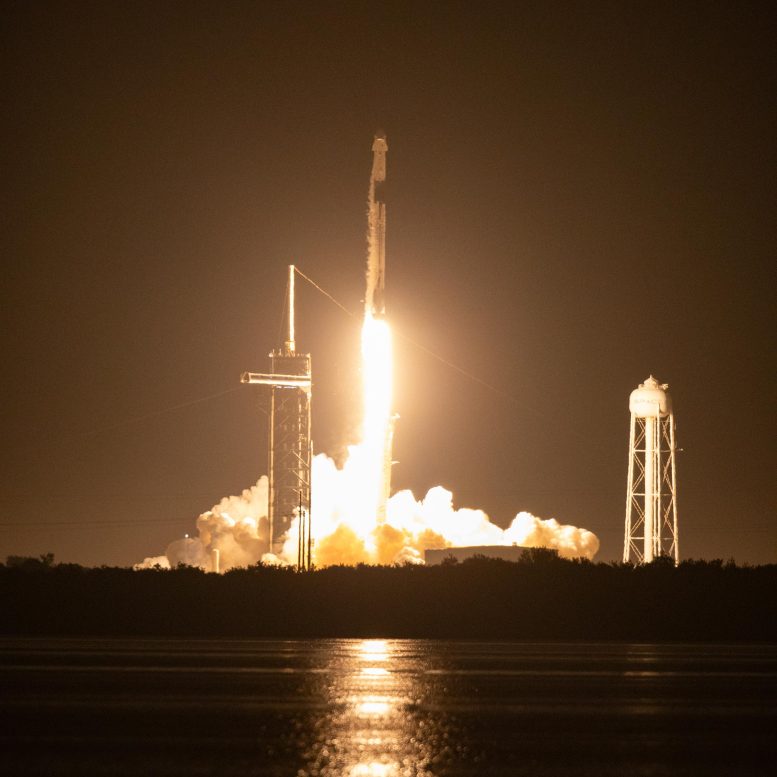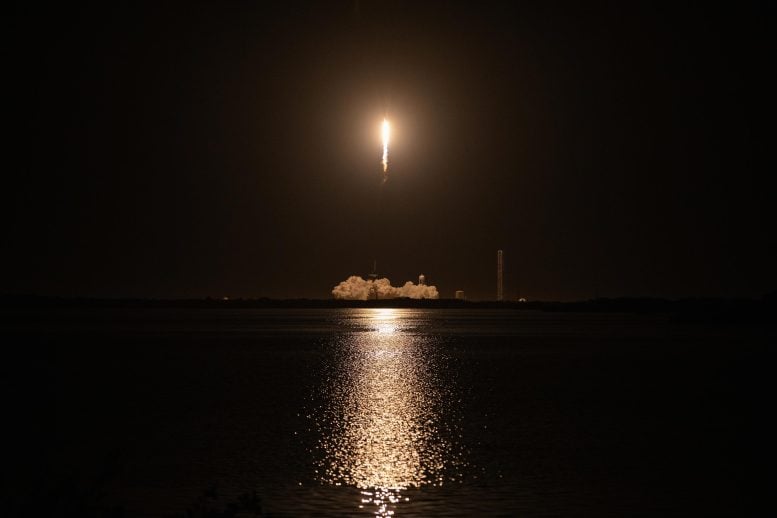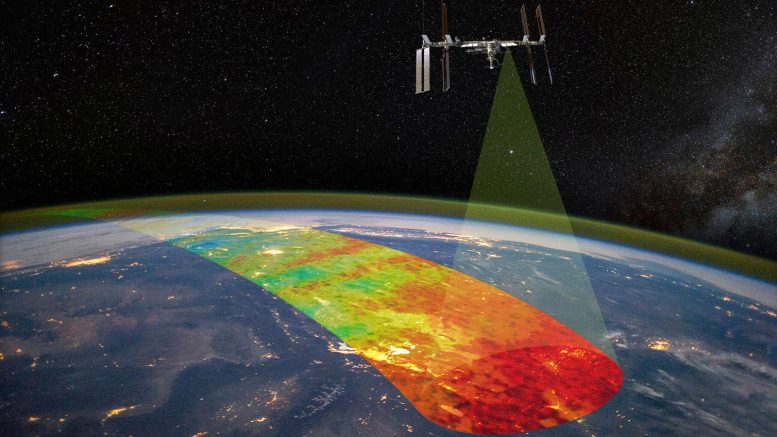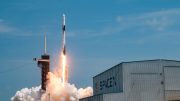
On Thursday, November 9, 2023, a SpaceX Falcon 9 rocket, with the Dragon spacecraft onboard, successfully launched from Launch Complex 39A at NASA’s Kennedy Space Center in Florida. This launch marked the 29th commercial resupply mission by SpaceX for NASA, destined for the International Space Station. Dragon was carrying NASA’s Atmospheric Waves Experiment, along with other science experiments, supplies, and cargo. Credit: NASA/Kim Shiflett
At 8:28 p.m. EST on November 9, 2023, NASA’s Atmospheric Waves Experiment, or AWE, lifted off from Kennedy Space Center in Florida aboard a SpaceX Falcon 9 rocket on the 29th commercial resupply mission (CRS-29) for NASA.
An uncrewed SpaceX Dragon spacecraft carrying AWE and over 6,000 pounds of other cargo autonomously docked with the International Space Station at 5:07 a.m. EST on November 11.

The SpaceX Falcon 9 rocket carrying the Dragon spacecraft lifts off from Launch Complex 39A at NASA’s Kennedy Space Center in Florida on Thursday, November 9, 2023, on the company’s 29th commercial resupply services mission for the agency to the International Space Station. Liftoff was at 8:28 p.m. EST. Credit: NASA/Kim Shiflett
Once installed on the outside of the space station, AWE will spend two years studying undulations in the air known as atmospheric gravity waves to understand the flow of energy through Earth’s upper atmosphere and space, helping us better understand the connections between terrestrial weather and space weather.
NASA’s Atmospheric Waves Experiment
NASA’s Atmospheric Waves Experiment (AWE) is a significant scientific endeavor aimed at enhancing our understanding of Earth’s atmosphere and its interaction with space weather. This experiment, part of a resupply mission to the International Space Station (ISS), investigates atmospheric gravity waves and their influence on the upper layers of Earth’s atmosphere.
Key Objectives and Features of AWE:
- Studying Atmospheric Gravity Waves: AWE focuses on examining undulations in the atmosphere, known as atmospheric gravity waves. These waves play a crucial role in transferring energy from the lower to the upper atmosphere.
- Understanding Earth’s Upper Atmosphere: By studying these waves, AWE aims to provide insights into the dynamics of Earth’s upper atmosphere. This includes understanding how energy and momentum are transferred and the impact of these processes on both terrestrial and space weather.
- Duration and Location: The experiment is conducted over a two-year period and is installed on the exterior of the ISS. This location allows for an optimal vantage point to observe the atmospheric phenomena.
- Technological Innovation: AWE employs advanced sensors and imaging technology to capture detailed observations of atmospheric waves. This data is critical for developing accurate models of atmospheric behavior.
- Impact on Weather Forecasting and Climate Models: The findings from AWE are expected to significantly contribute to improving weather forecasting models and our understanding of climate systems. By examining the connection between the lower and upper layers of the atmosphere, AWE could provide new insights into how weather on Earth’s surface impacts the space environment.
- Collaborative Effort: AWE represents a collaborative effort between NASA, SpaceX, and other international space agencies. This collaboration underscores the importance of international cooperation in space exploration and scientific research.
In summary, NASA’s Atmospheric Waves Experiment is a pivotal research project that not only advances our scientific knowledge of the Earth’s atmosphere but also has far-reaching implications for weather forecasting, climate modeling, and our understanding of the interplay between Earth’s weather and the broader space environment.










Be the first to comment on "NASA’s Atmospheric Waves Experiment (AWE) Launches to Space Station"